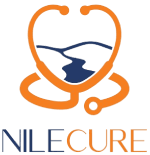
Laparoscopic hysterectomy is a minimally invasive surgical procedure performed to remove the uterus through small incisions in the abdomen using specialized instruments and a laparoscope (a thin, lighted tube with a camera). Here’s an overview of the procedure:
Preparation: Before the surgery, you will undergo a thorough evaluation by your healthcare provider, which may include a physical examination, medical history review, and pre-operative tests such as blood tests, imaging studies (e.g., ultrasound, MRI), and possibly a pelvic exam. Your healthcare provider will discuss the procedure with you, explain the risks and benefits, and answer any questions you may have.
Anesthesia: Laparoscopic hysterectomy is typically performed under general anesthesia, which means you will be asleep and pain-free during the procedure. In some cases, regional anesthesia or spinal anesthesia may be used instead.
Surgical Technique: During the procedure, several small incisions (usually 0.5 to 1 centimeter in length) are made in the abdomen. A laparoscope is inserted through one of the incisions to provide a magnified view of the pelvic organs on a monitor. Surgical instruments are inserted through the other incisions to perform the procedure.
Uterus Removal: The surgeon carefully detaches the uterus from the surrounding tissues and ligaments using specialized instruments. Depending on the reason for the hysterectomy (e.g., fibroids, endometriosis, uterine prolapse), different techniques may be used to remove the uterus, including cutting, morcellation (cutting the uterus into smaller pieces for removal), or extraction through the vagina (vaginal hysterectomy).
Closure and Recovery: Once the uterus has been removed, the surgeon closes any incisions with sutures or surgical glue, and dressings may be applied. You will be taken to a recovery area where you will be monitored as you wake up from anesthesia. Most patients can go home the same day as the procedure, although some may require an overnight stay in the hospital.
Recovery and Follow-up: Recovery from laparoscopic hysterectomy is typically quicker and less painful compared to traditional open surgery (abdominal hysterectomy). Most patients can return to normal activities within a few weeks, although strenuous activities and heavy lifting should be avoided during the initial recovery period. Your healthcare provider will provide instructions for post-operative care and schedule a follow-up appointment to monitor your recovery and evaluate the outcome of the procedure.
Laparoscopic hysterectomy offers several advantages over traditional open surgery, including smaller incisions, less pain, faster recovery times, shorter hospital stays, and reduced risk of complications such as infection and blood loss. However, it may not be suitable for all patients, and the decision to undergo laparoscopic hysterectomy should be made in consultation with a qualified gynecologist or gynecologic surgeon based on individual circumstances and treatment goals.

